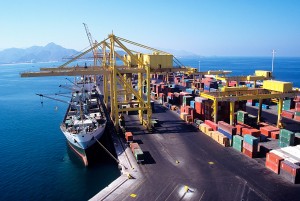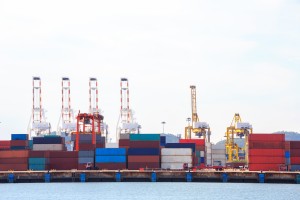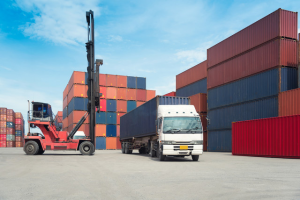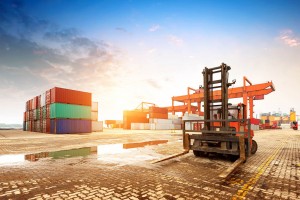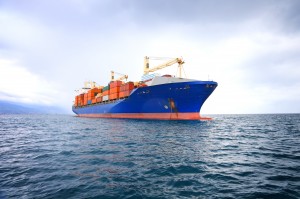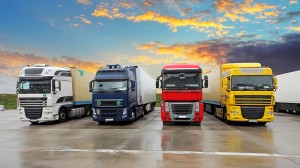Generally speaking, the transportation process of Chinese export goods from shipper to consignee is outbound logistics. Exporting goods from China to overseas involves a series of steps, including five physical steps and two documentation steps, each with associated costs that must be resolved by someone (usually the shipper or consignee). If you want to avoid cost surprises and unnecessary delays throughout your outbound logistics process, you need to make sure you clearly agree on who pays for which of these 7 steps each time you book a shipment.
Below, Focus Global Logistics will first introduce the seven steps of China’s outbound logistics: export haulage, origin processing, export customs clearance, shipping, import customs clearance, destination processing and import haulage.
1. Export transportation
The first part of shipping is export shipping. This involves the movement of goods from the shipper to the forwarder’s premises. For less than container loads, the freight forwarder’s premises is always the export consolidation center (origin warehouse), where the freight forwarder has its own personnel or designated agents. Goods are usually transported by road (by truck), rail or a combination. If the shipper is agreed to be responsible for this part of the shipment, it is usually arranged through the local shipping company. However, if the consignee is in charge, it usually makes the most sense to use a China’s freight forwarder that can provide export haulage as part of the international shipment.
2. Export customs clearance
For each shipment to be exported, customs formalities must be completed to meet regulatory requirements. Customs clearance is a transaction in which a declaration is made and the required documents are presented to the customs authorities and can only be carried out by companies with a valid customs license, so-called customs brokers. Export customs clearance can be done by a freight forwarder with a valid license or an agent designated by the freight forwarder. Alternatively, it can be performed by a customs broker directly appointed by the shipper who is not necessarily involved in any other part of the shipping process.
The export clearance steps must be completed before the goods leave the country of origin, if not done by the freight forwarder, usually before the goods enter the freight forwarder’s warehouse of origin.
3. Origin processing
Domestic warehouse handling covers the physical handling and inspection of all shipments from receipt at the warehouse to loading on a container ship. In short, when a cargo is received, it is inspected (tally), planned to be loaded, combined with other cargo, loaded into a container and moved to a port, where it is loaded onto a ship.
4. By air or sea
China’s freight forwarder decides to choose an airline or shipping company for the sea transportation from the origin to the destination. A freight forwarder signs a contract of carriage with a shipping company, in which case the shipper or consignee has no direct contact with the shipping company. Shipping costs are ultimately borne by the shipper or consignee.
Shipping is not the total cost of shipping from one port to another. There are various surcharges imposed by the industry, such as fuel adjustment factors and currency adjustment factors, which are passed on to the shipper or consignee.
5. Import customs clearance
Import customs clearance can usually begin before the goods arrive in the country of destination, by a freight forwarder or a freight forwarder’s agent or a customs broker designated by the consignee. Import customs clearance procedures must be completed before the goods leave the bonded area of the destination country.
6. Destination Processing
The cargo needs to be loaded and unloaded at the destination before it can be handed over to the consignee. Destination processing involves multiple destination charges and is usually performed by a freight forwarder or an agent appointed by a freight forwarder. Fees can be charged to the shipper or the consignee, but payment in full is always required before the goods are handed over to the consignee.
7. Terminal delivery
The final stage of transportation is the actual delivery of the goods to the consignee, which is carried out by the freight forwarder or the local carrier designated by the consignee. Terminal shipping usually includes shipping to a specific address, but does not include unloading from a truck, which is the responsibility of the consignee.
In the above seven steps, there are mainly four participants: the shipper, the consignee, the international freight forwarder and the shipping company. Among them, international freight forwarders are the main logistics providers that shippers or consignees deal with. Therefore, if you need to export goods from China to overseas, you must choose a reliable and professional freight forwarding company to perform China outbound logistics operations for you. Shenzhen Focus Global Logistics Co., Ltd. has been deeply involved in the industry for 21 years, and has maintained close and friendly cooperative relations with many well-known shipping companies. With advantageous shipping prices, from the perspective of customers, it provides the most cost-effective cross-border logistics and transportation solutions. If you have business needs, please feel free to contact us – TEL: 0755-29303225, E-mail: info@view-scm.com, and look forward to cooperating with you!
Post time: Nov-08-2022
